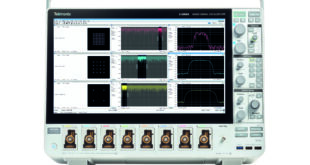A micro-LED chip is a type of light-emitting diode that is significantly smaller than traditional LEDs, and can be used in a variety of applications, including displays, lighting, and sensing.
One of the main advantages of micro-LEDs is their high brightness and efficiency. They can emit a lot of light using a relatively small amount of power, which makes them energy-efficient and long-lasting. Additionally, micro-LEDs can create highly customisable displays with excellent colour accuracy and contrast.
However, micro-LED technology is still relatively new and can be expensive to produce compared to traditional LED technology. Moreover, the testing and manufacturing of micro-LEDs require highly precise equipment and processes due to their small size, which can be a challenge for manufacturers.
ALIO Industries says precision stages can be a crucial tool in the micro-LED chips testing process as they provide the precise positioning and motion control necessary to achieve accuracy and repeatability.
Bill Hennessey, President of ALIO picks up the story. “As the micro-LED market gears up for mass production, the focus is shifting to the two major challenges that slow down commercialisation — low yield and high cost. Since the chip size of micro LEDs can be as small as a single micron, existing inspection equipment is often inadequate in many respects. Many standard tools simply don’t provide high enough resolution. Moreover, with the smaller pixel sizes, there is also a dramatic rise in the number of pixels that need to be processed during inspection. Test technologies are therefore emerging such as electroluminescence (EL) which is able to identify a great number of defects.”
EL testing is a non-destructive method of testing micro-LEDs and other semiconductor devices, which involves passing a small electrical current through the device, which causes it to emit light. The emitted light can then be measured and analysed to determine the quality and performance of the device.
EL testing is particularly useful for testing micro-LEDs because it allows for the detection of defects and performance issues that may not be visible using other testing methods. For example, EL testing can detect small defects in the micro-LED structure that may be invisible to the naked eye, such as dislocations or disclinations. Additionally, EL testing can provide information about the uniformity of the device’s emission and the distribution of current within the device.
The EL testing process requires physical probing of the electrical contacts on the micro-LED chips, which must be done with extremely high precision to avoid damage to the devices.
The smaller pixel sizes of micro-LEDs mean that there is a significant increase in the number of pixels that need to be processed during the inspection, which makes high-throughput inspection a major challenge. Precision motion control solutions can help to optimise the speed and efficiency of the testing process, enabling rapid and accurate movement of the testing equipment and reducing the time and cost associated with testing large numbers of micro-LED chips.
Hennessey continues: “We offer several motion control technologies that are suitable for testing micro-LEDs. For example, there is the Hybrid Hexapod, a parallel kinematic motion control system that provides six degrees of freedom with sub-micron precision and repeatability. This technology is ideal for micro-LED testing applications requiring high precision, accuracy, and speed. The Hybrid Hexapod combines rotary and linear motion to provide a large range of motion and high load capacity, making it suitable for testing large numbers of micro-LEDs simultaneously.”
Also, there are ALIO’s Air Bearing Stages, linear motion control systems that provide frictionless motion with high precision and accuracy. This technology is suitable for micro-LED testing applications that require high-speed and accurate motion control. Air bearing stages can achieve nanometre-level positioning accuracy and repeatability, making them suitable for testing micro-LEDs with high resolution and accuracy.
 Engineer News Network The ultimate online news and information resource for today’s engineer
Engineer News Network The ultimate online news and information resource for today’s engineer





